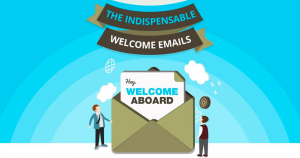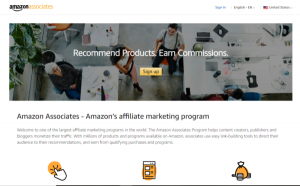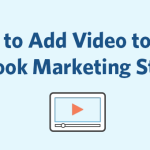Every month, you see a new “email is dead” blog post, or a new “email-killer.” And every month, product updates, newsletters, and discount coupons continue to flood my inbox.
I mean, social media was supposed to replace email, but Facebook still emails me when someone comments on my photo.
Unlike social media or other communication channels where you broadcast content, email allows you to craft unique content for specific groups.
That’s why it’s remained one of the most important parts of most brands’ marketing strategy.
Which is also kind of the problem. Every brand sends emails. How do you stay out of spam folders, get opened, and read?
Restructuring email marketing at Mention
We started restructuring our email marketing strategy a few months ago. We realized that although potential customers are interested in marketing, they aren’t all interested in the same kinds.
They’re motivated by different goals and do different things. Social media marketers want to start conversations, while growth marketers want to generate leads. They’re looking for different resources.
Most importantly, they all have varying degrees of knowledge about monitoring and our brand.
That’s when we started to look into segmentation, and our open rates have since averaged 40-50%.
Want to know how we did it? Let’s take a step back and start with the basics.
What is email segmentation?
Everybody loves personal attention.
Imagine you walked into a restaurant, and they already know that you’re vegetarian, lactose-intolerant, and can’t stand the smell of baked beans. Instead of offering you a massive menu, they propose customized choices catered to your dietary preferences.
That would be impossible in reality, unless the chef served only five customers (or was your mom).
But in email marketing, personalizing a customer’s experience is easier.
And that’s what segmentation is about. Personalizing your emailing based on information about your contacts.
Segmentation helps you:
- Plan your content strategy and creation
- Define the topics and tone of your emails
There are endless ways to segment your email list. The most basic method is by demographic information: age, gender, language, job titles, etc. More advanced options include interests or behavior. And it can be as complex or as simple as you want.
Why it’s necessary
I typically receive at least 50 emails per day. I open and read less than 10. If I receive too many irrelevant emails from a brand, I unsubscribe.
As your customers are flooded with more and more email, you cannot afford to send irrelevant emails. Untargeted emails not only waste time and money, they also hurt your brand.
Segmenting your email list helps you send the right content to the right customers. Companies that segment email lists see a 19% increase in open rates. This personalization leads to more conversions, more purchases, and happier customers.
How Mention does email segmentation
We have 500k subscribers, but we lose contacts when we send untargeted email blasts.
So we segment our contacts the same way we segment our content creation: by persona and lifecycle stage.
Segmentation by persona
Buyer personas help us understand our customers – their demographics, interests, and motivations.
You can create them by learning more about your current customers. Try sending out surveys, conducting interviews, or meeting them in person.
We obviously learn about our customers by monitoring their online conversations as well. Often that’s where you find the most honest answers.
You can monitor your industry, your brand, and your competitors with a tool like Mention.

Setting up targeted alerts will help you see:
- Real-time customer insights
- Customer demographics
- What your customers are interested in
You’ll discover who your customers are, along with their likes and dislikes, interests, and challenges.
After the content marketing team at Mention gathered enough information about our market, we sat down with sales to match their ideal client profiles with our buyer personas. Each lead in our database is assigned at least one persona, and receives tailored content .
Segmentation by lifecycle stage
Persona segmentation helps us learn subscribers’ interests in certain topics, but not their interest in buying.
To determine their interest level, we assign each lead to a lifecycle stage, which is where they are in the buying process.
We use three lifecycle stages: awareness, consideration, and decision. The more a lead interacts with content, the further she moves through the marketing funnel.
We customize our email copy and subject lines since the conversation we’d have with a new subscriber is very different from one we’d have with an engaged, warm prospect.
For example, an awareness-stage contact might receive a general social media strategy checklist, but a decision-stage prospect would get content that promotes and sells Mention.
Just like in the regular sales process – you can’t pitch too soon.
Real-life examples of email segmentation
Like we said earlier, segmentation helped us reach average open rates of 40-50%. These are the actual emails that made it happen, along with the info we used to segment, create, and optimize the campaign.
Email 1
Subject line: Crush social media with these killer tools
Offer: ebook
Persona: social media marketers
Lifecycle stage: consideration
Open rate: 55.3%
Click rate: 22.22%
Copy:

Since this email is targeted, both the subject line and body are very specific.
However, as these leads are just starting to learn about monitoring, we didn’t mention anything about our brand or our product. They’ve engaged with our brand a little, but we probably haven’t established much trust yet. That’s why we chose to focus on bringing value rather than selling ourselves.
Email 2
Subject line: Why social media marketers rely on Mention
Offer: success stories
Persona: social media marketers
Lifecycle stage: decision
Open rate: 59%
Click rate: 14.1%
Copy:

This second email is a lot more “promotional.” We didn’t even try to hide it. How did we get away with that?
First, this email was sent to social media marketers who have opted into our social media marketing content. The email is highly targeted with tailored content. They’ve expressed interest in the topic, so they won’t be surprised or put off when they receive it.
Second, we only send these decision stage emails to leads who’ve actively interacted with a lot of our content, showing clear interest in our brand.
By the time they receive a success story, they’ve probably already downloaded four ebooks, three checklists, and attended a webinar. In other words, they’re “ready” to be sold to.

In limiting these sales attempts, our subscribers are more willing to open most of our emails, knowing we don’t try to squeeze them dry all the time.
Improve your email open rates by keeping salesy emails to a minimum.
Applying segmentation to your email marketing
Segmentation has helped us learn more about our customers and help them better in return. It’s had a dramatic impact on our email marketing. To get started sending more relevant emails to your own list, here’s how to get started:
- Know your customers. Gather data through forms, surveys, interviews, or monitoring. The more you know about your customers, the better you can segment them.
- Create personas. Customer personas are key to your list segmentation. They help you define which segments need which message.
- Create customized content. Write and design content that’s targeted towards each persona.
- Use an email tool to segment emails. We use HubSpot, but there are plenty others offering easy-to-use segmenting services, like MailChimp, GetResponse, and Customer.io.
- Measure and A/B test. Track open and click-through rates to see how customers interact with your emails. Test and optimize to keep improving your results.
Setting up in the beginning takes some time. But once you see the results it brings, I promise you’ll be hooked!
Email isn’t dead. Far from it.
Email is alive and kicking, but certainly evolving. But poorly targeted email marketing wastes time, hurts deliverability, and can hurt your brand rep.
There’s no way around it. Learn about your customers, and as HubSpot says, “market unto others as you would have them market unto you.”
Digital & Social Articles on Business 2 Community
(73)
Report Post






